Employees and their accomplices committed 90% of bank frauds in 2017. Fraud or attempted fraud amounted to GHC 190.38M and actual losses through fraud was GHC30.8 in 2017[i].
Global occupational fraud cost organizations more that USD 7 billion in 2018 in cases reported to ACFE, and it estimates total global fraud loss of about USD 4 trillion in 201[ii].
Small organizations lose twice as much per scheme to occupational fraud than large organizations[iii].
Businesses, including yours, are at risk. Don’t be complacent because your employees will commit most of the fraud you experience.
What is fraud?
Fraud is getting personal gain through deception. Occupational fraud is one that is committed by employees.
Occupational fraud is using one’s occupation for personal enrichment through deliberate misuse or misapplication of the organization’s resources.
Common Types of Business Fraud
- Bank and cash fraud
This is one of the most basic types of business fraud. The primary aim is to steal funds from the business. This occurs in various ways. The most common ones being cheque forging, unauthorized withdrawals of funds and cyber theft.
- Misappropriation of assets
This occurs when employees use office resources for personal gain such as inventory and asset theft.
- Billing schemes
They are customer and supplier frauds. A common form of fraud is use of non-existent suppliers to defraud the business.
Small businesses are at risk
Small businesses suffer business fraud because they have fewer resources to prevent fraud. Fraud can destroy a small business and lead to its collapse.[iv]
There are many conditions that allow fraud to take hold:
- Employees perform multiple functions, allowing them to hide their actions.
- Staff become too familiar and trusting with each other.
- Lack of formal procedure means things don’t get recorded.
- Staff lack the skill to recognize fraud.
Steps to deter fraud
Small businesses must take steps to deter fraud and detect it early. Here are measures that reduce the risk of fraud:
- One person should not approve a transaction, keep the books and custody of assets
Many small businesses have one person who always handles these bookkeeping functions:
- Keep the petty cash
- Receive cheques and cash
- Reconcile bank and general ledger accounts
- Processing invoices and payments
- Bookkeeping
It is easy for an employee to commit a fraud and hide it if he carries out all these functions. Always make sure at least two people perform these functions.
- Internal control arrangement
The business must institute measures to strengthen internal control such as:
- Approvals – a manager or supervisor must verify and approve transactions.
- Verification – compare two or more related items with each other or compare an item with a policy and follow up when the items do not match or contradicts policy.
- Reconciliation – compare two or more data elements and investigate differences.
- Supervision – a supervisor keeps a close eye on operations to make sure transactions are being performed according to policy and procedure.
- Bank account and cash
Keep a close eye on your bank account and cash. Put in measures such as:
- Reduce the use of physical cash and you cut the opportunity for theft. Use cheques and online payments.
- Use online banking – make more use of online banking. Online banking reduces the need for cheques. Even more important, you get to approve payments from the bank no matter where you are. Check out now.
- Regular reconciliations – reconcile your bank accounts at least once a month. Someone, other than the accountant should reconcile the bank account. If you have no one else, you as a business owner should do it.
- Watch your bank account – use online banking and bank alerts to check your accounts.
Look out for these items:
- lost or out-of-order cheques
- unknown payment recipients
- payments made to unrecognized businesses or personal accounts
- Asset theft
Measures that can reduce asset theft include:
- Asset tracking – Put a simple tracking system in place to identify, keep track and check fixed assets.
- Physical control – keep assets, such as inventory, under lock and key.
- Authorization – make it a policy that employees must get approval to use company resources like company cars and inventory.
- Asset counts and reconciliation – Inspect and count stocks at least once a month. The person who holds the asset should not do the count. Use someone else. Reconcile the results to the asset records after each count.
- Billing schemes
Some measures you can take to prevent such schemes are:
- Know your customers and vendors – vet your customers and vendors. Check if they are legal and able to meet their obligations.
- Create an approved vendor list – a list of vendors you’ve verified and trust. Buy only from these vendors.
- Authorization: approve sales and purchase transactions before they are carried out.
- Reconcile statements with invoices from customers and vendors to uncover dubious transactions.
- Get help
One person should not approve transactions, keep the accounts and the resulting assets. This may be impossible with a small staff.
Outsourcing accounting, inventory counts, reconciliations and audit can help a small business to reduce the risk of fraud.
Fraud can devastate your business. Our outsourced audit and accounting services can help to put in effective controls and prevent fraud. Contact us at in**@sc*.gh or visit our website.
For more blogs and information please follow us on Facebook, Twitter and LinkedIn.
References:
[i]Daily Graphic, 19 Nov 2018, Over 90% of banking fraud comes from employees – BOG, [ii]ACFE, Report to the Nations: 2018 Global Study on Occupational Fraud and Abuse [iii]ACFE, Report to the Nations: 2018 Global Study on Occupational Fraud and Abuse [iv]XERO, Fraud Prevention Tips for Your Small Business Clients
